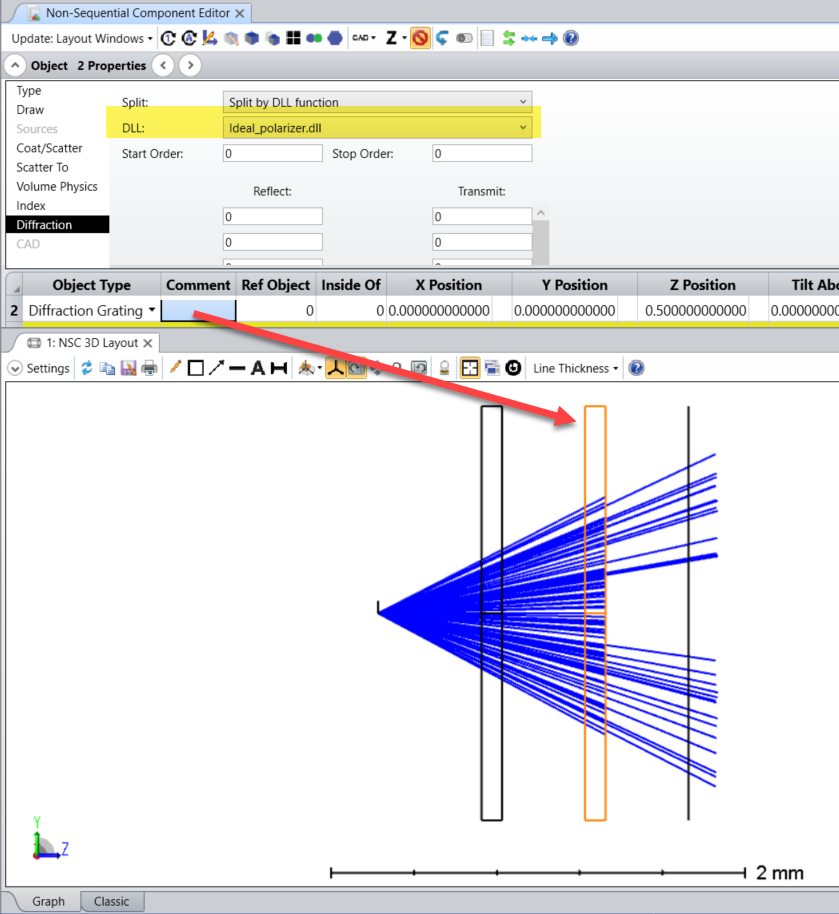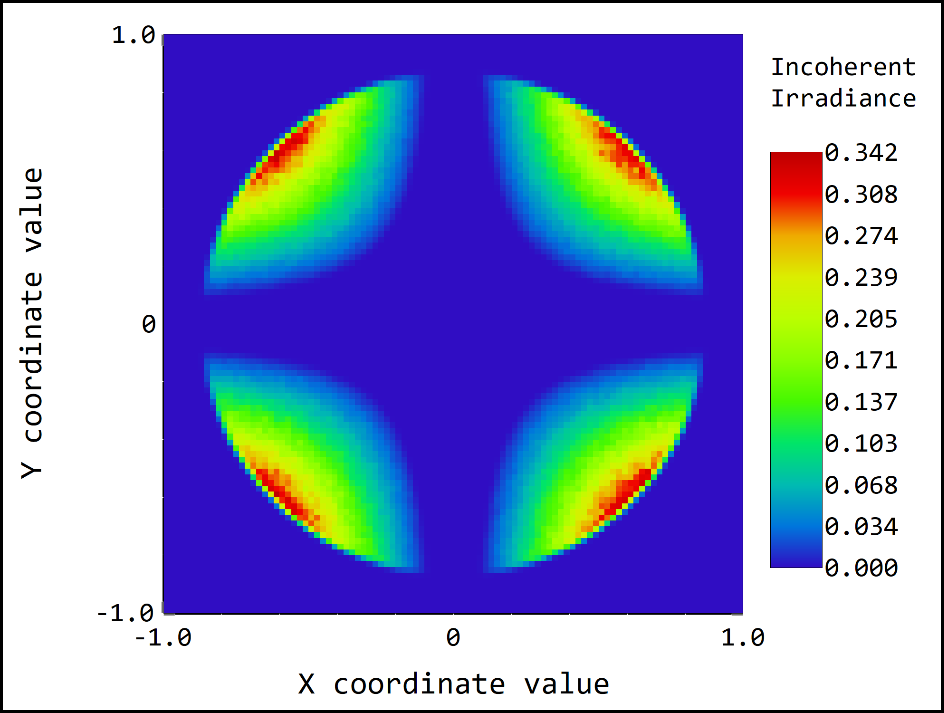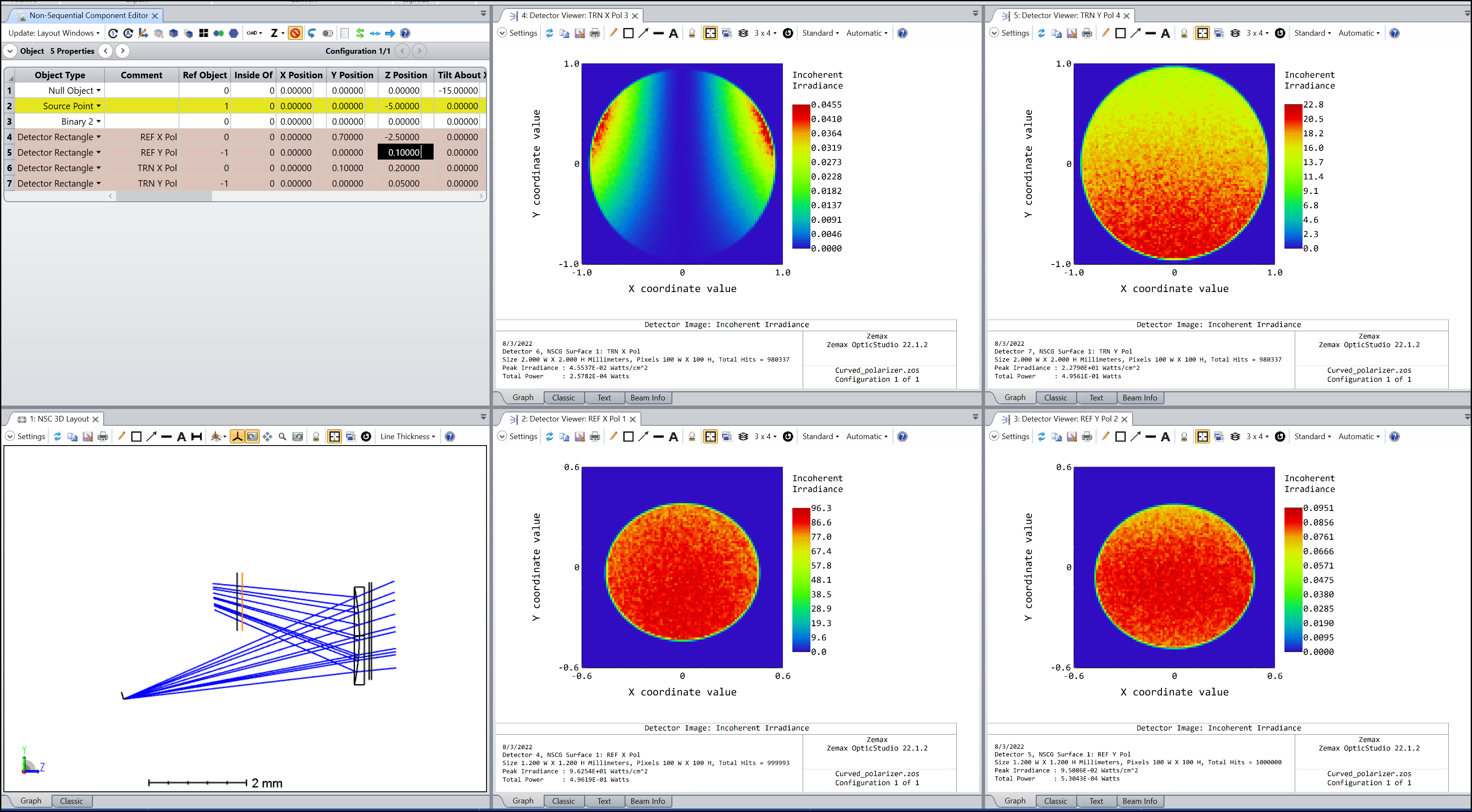
This diffraction DLL models a non-paraxial idealized polarizer model that produces a linear polarized transverse electric field. It is an alternative to the Jones matrix, that model polarizers for paraxial fields under normal incidence. The diffractive DLL is only a tool used here to compute the electric field.
For more information, check: https://www.researchgate.net/publication/324234609_Non-paraxial_idealized_polarizer_model
This DLL works for OpticStudio subscription licenses. The source code is not shared.
Author: Michael Cheng
Click here to download | |||
|---|---|---|---|
| Date | Version | OpticStudio Version | Comment |
| 2021/12/01 | 1.0 | - | Creation |





